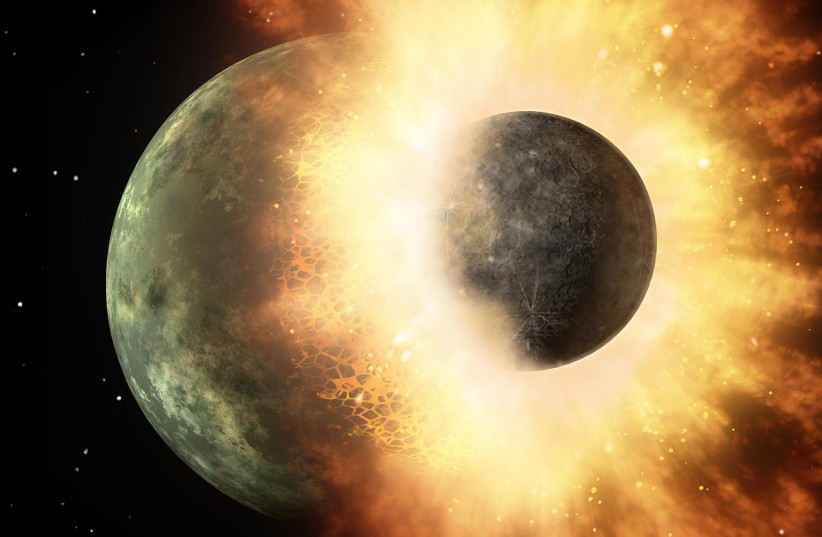Planet Earth's water levels were similar to what they are today even before the moon existed, a new study claims. The claim counters a long-held belief among scientists that the Earth's water levels were initially much higher, and were depleted by the "Great Impact" over 4 billion years ago, which led to the formation of the moon.
How to analyze Earth's water levels
The current difficulty in analyzing the Earth's water levels at its early stages stems from the fact that tectonic plate movements and weathering processes have blurred the distinction between primordial and newer bodies of water. In order to bypass this problem, the researchers - from the Lawrence Livermore National Laboratory in California - looked at a different source: the moon. The study was published by the peer-reviewed PNAS journal online after being accepted on December 23, 2021.
The scientific consensus is that the moon was created after a collision between an ancient planet Earth (called proto-Earth) and an ancient body about the size of today's Mars (known as Theia). The two bodies mixed and some of the material that broke off due to the impact is what eventually formed the moon. Scientists did not know prior to the study what the amount of water on proto-earth was: Did proto-Earth have the same amount of water as we have today, or did it have more and some of it was lost at the Giant Impact?
The team analyzed a number of rocks samples called "lunar highland rocks," which previous studies have shown present an accurate picture of the moon's chemical properties at its creation. More specifically, the team analyzed the rate at which a certain isotope (an atom with a specified chemical element but a different number of neutrons in its nucleus, thus giving it a different mass) known as rubidium-87 (87Rb) evolved into a different isotope known as strontium-87 (87Sr). Water is highly volatile, meaning it vaporizes easily at a given temperature and pressure. Rb is highly volatile but Sr is not, so a high ratio indicates a large amount of volatile matter existing prior to the rocks' foundation while a low ratio indicates a low amount.
The analysis found an extremely low Rb-Sr ratio in the lunar rocks, indicating that the matter comprising them contained consistent volatility both before and after the Great Impact.

The researchers then calculated that even given the lowest possible Rb/Sr ratio of Theia, and combined with their findings of the Rb/Sr ratio on the moon, the Rb/Sr ratio on proto-Earth would have had to be very close to what it is today, meaning that its water levels were similar to what they are today and were not altered by the Giant Impact. This essentially was an answer to the age-old debate about Earth's water levels at its earliest stages.
The conclusion led to another important discovery: The Giant Impact happened late than what was originally thought.
The Rb/Sr ratio at the moon's creation was affected by three parameters - the timing of the Giant Impact, the percentage of Theia and proto-Earth that made up the moon (the moon, for example, could have been made up of 90% Theia and 10% proto-Earth, 70%-30%, or a different distribution), and the Rb/Sr ratio of both Theia and proto-Earth.
Since the team found a clue to the last parameter, they figured that given the lowest possible Rb/Sr ratio of Theia and what they knew from other studies about the distribution between Earth and Theia in the moon's makeup, they could estimate the earliest possible date of the Great Impact itself. Indeed, their calculations showed that the Giant Impact could have happened no earlier than 4.45 billion years ago, which is a relatively late date compared to what was originally thought.
